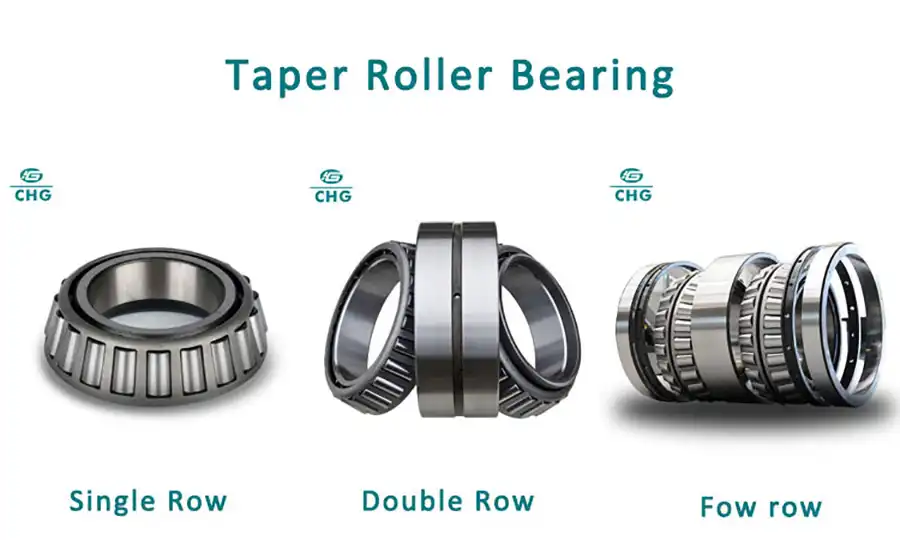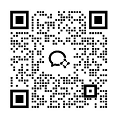What are the Signs of Failure in Sealed Tapered Roller Bearings?
Sealed Tapered Roller Bearings are critical components in various industrial applications, providing support for both radial and axial loads while offering durability in challenging environments. These bearings combine the capabilities of tapered roller bearings with protective seals that prevent contaminants from entering while retaining lubricant. Recognizing warning signs of failure early can prevent equipment breakdowns, reduce maintenance costs, and extend machinery lifespan.

How Do Unusual Noises Indicate Problems in Sealed Tapered Roller Bearings?
What Sounds Should Alert Maintenance Teams?
Properly functioning Sealed Tapered Roller Bearings operate with minimal noise. However, failing bearings develop distinctive sounds that serve as early warning signals. Grinding noise often indicates improper contact between rolling elements and races, suggesting contamination or wear. Clicking or popping sounds may signal damaged rollers or improper bearing seating. High-pitched squealing typically indicates inadequate lubrication inside the bearing. As the lubrication film breaks down, metal-to-metal contact occurs, creating this sound while accelerating wear. Maintenance teams should establish regular sound monitoring protocols, as these acoustic indicators often precede visible damage.
How Does Vibration Analysis Help Detect Bearing Failures?
Vibration analysis is an effective predictive maintenance technique for detecting Sealed Tapered Roller Bearing issues. As bearings deteriorate, they produce distinct vibration patterns that can be measured and analyzed. When rolling elements pass over damaged areas, they create vibrations at specific frequencies. Early-stage bearing wear typically manifests as high-frequency vibrations from microscopic pitting or spalling on rolling surfaces. As damage progresses, vibrations become more pronounced and shift to lower frequencies. Implementing regular vibration monitoring allows maintenance teams to track bearing wear over time and identify which bearings require attention before performance is affected.
What Thermal Indicators Suggest Bearing Problems?
Temperature monitoring provides another method for detecting Sealed Tapered Roller Bearing failures. When bearings begin to fail, they generate excess heat due to increased friction. Using infrared thermography, maintenance teams can identify hotspots without disrupting operations. Temperature differentials between similar bearings often provide reliable indication of problems. Common causes of overheating include insufficient lubrication, contamination, misalignment, or excessive loading. Sealed bearings may naturally run slightly warmer than open bearings due to additional friction from the seals. However, sudden temperature increases almost always indicate a developing problem.

What Visual Signs Reveal Sealed Tapered Roller Bearing Failure?
How Can External Inspection Identify Bearing Issues?
Visual inspection can identify several external indicators of Sealed Tapered Roller Bearing problems. Lubricant leakage around the bearing housing or seals suggests deteriorated seals. Discoloration around the housing often indicates overheating, with blue or black marks suggesting excessive temperatures. Physical damage such as cracks or deformation may point to severe internal problems. Excessive shaft movement or visible wobble suggests the bearing has developed significant internal clearance due to wear. Even surrounding components can provide clues—unusual wear patterns on seals, shafts, or housing surfaces may indicate bearing malfunction.
What Internal Damage Patterns Indicate Specific Failure Modes?
When a Sealed Tapered Roller Bearing is removed for inspection, damage patterns reveal specific failure modes. Spalling—flaking or chipping of bearing surfaces—often indicates fatigue failure due to wear or excessive loading. Brinelling presents as indentations in the races, usually caused by impact loading or improper installation. Smearing occurs when metal transfers between components due to slippage, appearing as streaks on roller paths. Corrosion damage, characterized by pitting and rust, suggests moisture has penetrated the seals. Cage damage often results from vibration or improper lubrication. Rollers may show end wear if the bearing has experienced misalignment.
How Does Contamination Affect Sealed Tapered Roller Bearings?
Despite protective seals, Sealed Tapered Roller Bearings remain vulnerable to contamination. Particle contamination acts like sandpaper between precision-machined surfaces, creating wear tracks that eventually develop into spalling. Water contamination causes corrosion and degrades lubricant properties. Chemical contamination can attack bearing materials and degrade seals. Evidence of contamination often appears as scoring marks, discolored lubricant, or rust formation. Contamination issues frequently manifest as uneven wear patterns. Implementing proper contamination control measures extends bearing life significantly.
What Performance Changes Signal Sealed Tapered Roller Bearing Deterioration?
How Does Increased Power Consumption Relate to Bearing Health?
One early indicator of Sealed Tapered Roller Bearing deterioration is increased power consumption. As bearings wear, they generate more friction, requiring additional energy. In electric motors, amperage readings may increase while output remains constant. Production machinery may exhibit longer cycle times or reduced throughput. For vehicles, fuel consumption may increase unexpectedly. These efficiency losses occur because failing bearings create additional resistance. Implementing power monitoring enables maintenance teams to establish baseline energy consumption and track deviations over time.
What Operational Changes Indicate Bearing Wear?
As Sealed Tapered Roller Bearings deteriorate, machines exhibit operational changes. Reduced precision in machining or positioning systems may indicate increasing clearances within bearings. Equipment may begin producing parts that drift toward the edges of acceptable quality specifications. Decreased maximum operating speeds suggests the bearing can no longer handle its designed load capacity. Machines may experience longer warm-up times or require more frequent adjustments. In rotating equipment, irregular rotation patterns or wobble indicates developing bearing issues. Equipment operators often notice these changes before monitoring systems detect problems.
How Does Lubricant Analysis Reveal Bearing Condition?
Lubricant analysis provides insights into Sealed Tapered Roller Bearing condition. As bearings fail, they shed metal particles into the lubricant, with the size, shape, and composition indicating the type and severity of wear. Spectroscopic analysis can identify specific elements present, helping pinpoint which components are wearing. Beyond wear particles, analysis can reveal other issues. Changes in viscosity may indicate lubricant degradation. Increased oxidation levels suggest the lubricant is breaking down due to elevated temperatures. The presence of contaminants confirms seal failure or environmental ingress.
Conclusion
Recognizing the signs of Sealed Tapered Roller Bearing failure—from unusual noises and vibrations to visual indicators and performance changes—enables proactive maintenance that prevents costly downtime and secondary damage. By implementing comprehensive monitoring programs that include acoustic, thermal, visual, and performance analysis, maintenance teams can detect bearing issues at their earliest stages and plan interventions strategically. Understanding the specific failure modes and their underlying causes allows for targeted improvements in installation, lubrication, and operating practices that extend bearing life in even the most challenging applications.

Luoyang Huigong Bearing Technology Co., Ltd. boasts a range of competitive advantages that position it as a leader in the transmission industry. Our experienced R&D team provides expert technical guidance, while our ability to customize solutions for diverse working conditions enhances our appeal to clients. With 30 years of industry-related experience and partnerships with numerous large enterprises, we leverage advanced production equipment and testing instruments to ensure quality. Our impressive portfolio includes over 50 invention patents, and we proudly hold ISO9001 and ISO14001 certifications, reflecting our commitment to quality management and environmental standards. Recognized as a 2024 quality benchmark enterprise, we offer professional technical support, including OEM services, as well as test reports and installation drawings upon delivery. Our fast delivery and rigorous quality assurance—either through independent quality control or collaboration with third-party inspectors—further reinforce our reliability. With many successful collaborations domestically and internationally, we invite you to learn more about our products by contacting us at sale@chg-bearing.com or calling our hotline at +86-0379-65793878.
References
Harris, T. A., & Kotzalas, M. N. (2023). Essential Concepts of Bearing Technology. CRC Press. Chapter 8: "Failure Analysis of Rolling Element Bearings."
Woo, S., & O'Neal, D. L. (2024). Reliability and Failure Analysis of Industrial Sealed Bearings. Journal of Mechanical Engineering Science, 238(4), 712-729.
SKF Group. (2022). Bearing Damage and Failure Analysis Guide. SKF Publication No. 10001 EN.
Timken Company. (2023). Tapered Roller Bearing Catalog and Engineering Journal. Timken Publication No. 60-950.
Johnson, K. L., & Spence, A. (2024). Contact Mechanics and Wear of Sealed Tapered Roller Bearings. Tribology International, 171, 107513.
Zhang, Y., Li, X., & Wang, L. (2023). Vibration-Based Fault Diagnosis for Tapered Roller Bearings in Heavy Machinery. Mechanical Systems and Signal Processing, 188, 109456.

